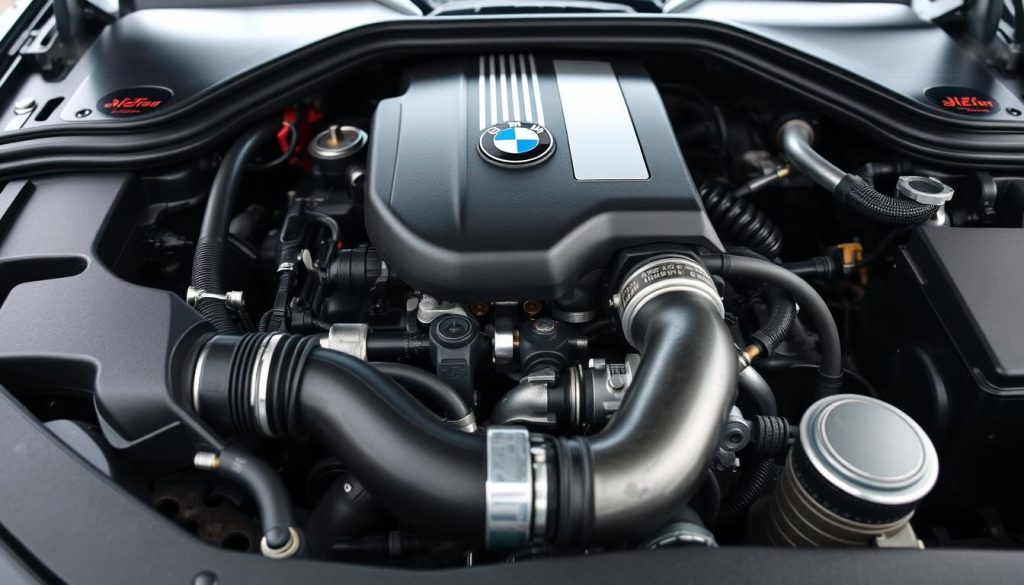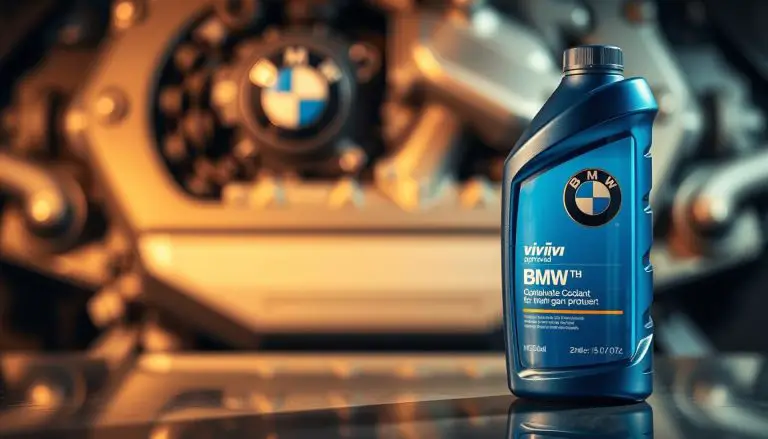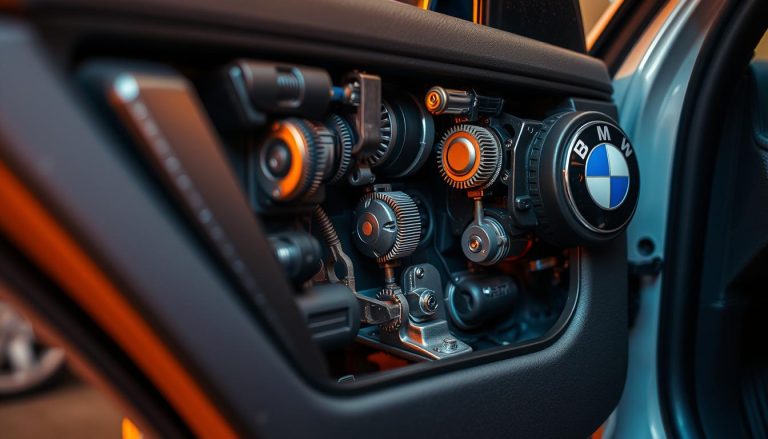Ensuring the BMW 328i operates at peak performance is paramount for its longevity. A vacuum leak, a prevalent issue, can significantly impede its efficiency. Such leaks are known to diminish engine performance, compromise fuel efficiency, and potentially harm other critical engine components.
Accurately identifying and rectifying a vacuum leak is imperative for maintaining your vehicle’s optimal functionality. The task necessitates pinpointing the leak’s origin, a challenge that demands precise guidance. This article aims to guide you through the process of detecting and repairing vacuum leaks in your BMW 328i, ensuring its continued performance excellence.
Key Takeaways
- Understanding the causes and symptoms of vacuum leaks in your BMW 328i.
- Step-by-step guide on detecting vacuum leaks.
- Methods to repair vacuum leaks effectively.
- Tips to prevent future vacuum leaks.
- Importance of regular maintenance for your BMW 328i.
Understanding Vacuum Systems in BMW 328i
The vacuum system is integral to the BMW 328i engine’s functionality. It ensures the necessary vacuum for components such as the brake booster, fuel system, and HVAC controls.
The Role of the Vacuum System in Engine Performance
The vacuum system is paramount for maintaining optimal engine performance. It regulates air/fuel mixture, idle speed, and overall engine operation. A malfunctioning vacuum system can result in decreased performance, reduced fuel efficiency, and potential damage to other engine components.
Common Vacuum Components in BMW 328i Models
Common components include vacuum hoses, intake manifold gaskets, and various vacuum-controlled devices. The table below outlines some of the key components and their functions:
| Component | Function |
|---|---|
| Vacuum Hoses | Transfer vacuum to various engine components |
| Intake Manifold Gaskets | Seal the intake manifold to prevent vacuum leaks |
| Vacuum-Controlled Devices | Regulate engine functions such as idle speed and air/fuel mixture |

How Model Years Differ (E90/E92 vs. F30 Generations)
The E90/E92 and F30 generations of BMW 328i exhibit differences in their vacuum system designs. The E90/E92 models feature a more complex vacuum system with additional components. In contrast, the F30 generation boasts a more streamlined system. Recognizing these distinctions is crucial for accurately diagnosing and rectifying vacuum leaks in your specific model.
Signs and Symptoms of Vacuum Leaks
Vacuum leaks can significantly impact your BMW 328i’s engine performance, leading to various noticeable symptoms. Recognizing these signs early can help prevent further damage and costly repairs.
Engine Performance Issues
One of the primary indicators of a vacuum leak is a decline in engine performance. This can manifest as:
- Rough idling or stalling
- Decreased power and acceleration
- Poor fuel efficiency
Unusual Sounds and Noises
A vacuum leak can also cause unusual sounds, such as hissing or sucking noises coming from the engine area. These sounds are often more pronounced when the engine is idling.
Check Engine Light Warnings
The check engine light on your BMW 328i’s dashboard can illuminate due to a vacuum leak. This is because the leak can trigger the vehicle’s onboard diagnostics system, leading to the storage of specific trouble codes.
Specific BMW 328i Diagnostic Trouble Codes
Certain diagnostic trouble codes (DTCs) are commonly associated with vacuum leaks in the BMW 328i. These include codes related to fuel trim and airflow. For instance, codes like P0171 (System Too Lean Bank 1) can indicate a vacuum leak.

Tools Needed to Test BMW 328i For Vacuum Leaks
The necessity of precise diagnostic tools in identifying vacuum leaks within your BMW 328i cannot be overstated. To ensure a thorough diagnosis and subsequent repair of vacuum leaks, the acquisition of the appropriate equipment is paramount.
Essential Diagnostic Equipment
Diagnosing vacuum leaks necessitates the utilization of fundamental diagnostic tools. These include a vacuum gauge, a multimeter for the examination of electrical circuits pertinent to vacuum components, and a smoke machine for the identification of leak locations.
BMW-Specific Tools
The utilization of BMW-specific tools can significantly streamline the diagnostic process. The BMW ISTA/D diagnostic software emerges as an indispensable asset for the identification and troubleshooting of vacuum leak-related issues. Concurrently, a BMW-compatible OBD-II scanner proves invaluable in retrieving diagnostic trouble codes (DTCs) that may signal vacuum leak problems.
Optional Tools That Make the Job Easier
Optional tools can further enhance the diagnostic process for vacuum leaks. A handheld vacuum pump facilitates the testing of components such as vacuum solenoids and actuators. A leak-down test kit also proves useful for more in-depth diagnostics.
| Tool | Description | Usefulness |
|---|---|---|
| Vacuum Gauge | Measures vacuum pressure | High |
| Smoke Machine | Identifies leak locations | High |
| BMW ISTA/D Software | BMW-specific diagnostic software | High |
| Handheld Vacuum Pump | Tests vacuum components | Medium |
Preparing Your BMW 328i for Vacuum Leak Testing
The preparation of your BMW 328i for vacuum leak testing is a pivotal step, one that demands meticulous attention. To guarantee the precision and dependability of the results, several critical considerations must be addressed.
Safety Precautions
Initiate the process by donning protective attire, encompassing gloves and safety glasses, to safeguard against potential hazards. Verify that the engine has cooled down to avert burns.
Accessing Key Components
Clear access to key components such as the intake manifold, vacuum hoses, and PCV system is paramount. Remove any engine covers or shields as deemed necessary.
Engine Conditions for Optimal Testing
The engine must be in optimal working condition, with the fuel system functioning properly. Confirm that the battery is fully charged to circumvent any diagnostic complications.
Common Vacuum Leak Locations in BMW 328i
Identifying the typical locales of vacuum leaks in a BMW 328i is pivotal for streamlining diagnostic endeavors. Such leaks can precipitate a cascade of problems, including diminished engine performance and compromised fuel efficiency. By pinpointing these areas, one can expedite the identification and rectification of these maladies.
Intake Manifold and Gaskets
The intake manifold and its gaskets are frequently implicated in vacuum leak occurrences. The gaskets, subject to degradation over time, may fail to seal properly, permitting unregulated airflow into the engine. A thorough examination of the intake manifold gaskets for any evidence of wear or damage is imperative for diagnosing vacuum leaks.
Vacuum Hoses and Connections
Vacuum hoses and their connections are also susceptible to leakage. Age-related degradation can cause these hoses to become brittle or develop cracks, resulting in leaks. A meticulous inspection of each hose and connection for any signs of deterioration or damage is crucial.
PCV System Components
The Positive Crankcase Ventilation (PCV) system, tasked with the recirculation of engine gases, can be compromised by clogged or damaged components. Such malfunctions can lead to vacuum leaks. It is essential to verify the integrity of the PCV system.
EVAP System Components
The Evaporative Emission Control (EVAP) system is another potential source of vacuum leaks. Leaks within this system can negatively impact engine performance and trigger diagnostic trouble codes. A thorough examination of the EVAP system’s components for any signs of damage or leaks is imperative.
Model-Specific Trouble Spots
Diverse models and generations of the BMW 328i exhibit unique vulnerabilities to vacuum leaks. For instance, the E90/E92 and F30 generations may harbor different common leak locations due to design variations. Recognizing these model-specific trouble spots is crucial for effective diagnosis.
By concentrating on these prevalent vacuum leak locations, one can enhance diagnostic accuracy and repair efficiency in their BMW 328i. This ensures optimal engine performance and fuel efficiency.
Visual Inspection Techniques
Visual inspections serve as a cornerstone in diagnosing vacuum leaks in BMW 328i vehicles. This approach entails a meticulous examination of engine components to detect wear, damage, or deterioration indicative of vacuum leaks.
Checking Hoses and Connections
The condition of vacuum hoses and their connections is paramount during a visual inspection. These hoses, prone to brittleness, cracking, or disconnection, can precipitate vacuum leaks. It is imperative to scrutinize each hose for any signs of damage and to verify that all connections are intact and leak-free.
Inspecting Gaskets and Seals
Gaskets and seals are pivotal in preventing vacuum leaks. A thorough examination of the intake manifold gasket, valve cover gasket, and other seals is necessary. Any leakage or damage should be noted, with particular attention to oil stains or soot, which often signal a leak.
Using Flashlights and Mirrors for Hard-to-See Areas
Inspecting certain engine compartment areas necessitates specialized tools. A flashlight illuminates dark or shadowed regions, while a mirror facilitates inspection around corners or behind components. This technique is invaluable for examining the vicinity of the intake manifold or areas behind the engine.
| Inspection Area | Common Issues | Tools Needed |
|---|---|---|
| Hoses and Connections | Cracks, brittleness, disconnections | Visual inspection, flashlight |
| Gaskets and Seals | Leaks, damage, oil stains | Visual inspection, flashlight, mirror |
| Hard-to-See Areas | Hidden damage, wear | Flashlight, mirror |
Smoke Test Method for Finding Vacuum Leaks
The smoke test method, a cornerstone in automotive diagnostics, is notably effective for identifying vacuum leaks in BMW 328i models. By introducing smoke into the system, this technique visually pinpoints leak sources, enhancing diagnostic precision. Its efficacy stems from its ability to visually delineate leak locations, facilitating targeted repairs.
Setting Up a Smoke Machine
Initiating a smoke test necessitates the utilization of a specialized smoke machine, designed for automotive diagnostics. These devices are accessible for purchase or rental at various auto parts retailers or through online platforms. When procuring a smoke machine, it is imperative to select one compatible with your BMW 328i’s intake system and offering adjustable smoke output.
Key steps in setting up the smoke machine include:
- Connecting the smoke machine to the intake system, typically at the air intake or other designated ports.
- Ensuring all other vacuum ports are sealed to prevent smoke from escaping and to pressurize the system.
- Activating the smoke machine and adjusting the smoke output to a level that is safe for the engine components.
Performing the Test on a BMW 328i
Post-machine setup, the subsequent phase involves a meticulous visual examination of the engine and its environs for smoke emanation. This inspection, often augmented by a flashlight or inspection light for obscured areas, necessitates a focused attention on regions prone to vacuum leaks. Particular scrutiny should be directed towards the intake manifold, vacuum hoses, and PCV system components.
It’s crucial to be methodical in your inspection to ensure that no potential leak points are overlooked.
Interpreting Smoke Test Results
Observation of smoke emanating from a specific area signifies a vacuum leak. The precise location of the leak will dictate the subsequent repair strategy. Common leak sources include damaged vacuum hoses, faulty intake manifold gaskets, and compromised PCV system components.
“The smoke test method is invaluable for diagnosing vacuum leaks because it provides a clear visual indication of where the leak is occurring, making the repair process much more straightforward.”
Common Smoke Test Mistakes to Avoid
To guarantee the reliability of the smoke test, several pitfalls must be circumvented. These include inadequate sealing of vacuum ports, excessive smoke output potentially damaging engine components, and insufficient examination of all potential leak areas.
Best practices include:
- Carefully following the smoke machine’s manufacturer instructions.
- Ensuring the engine is at a suitable temperature for the test.
- Conducting a thorough inspection of all engine components that could be sources of vacuum leaks.
Pressure and Vacuum Testing Methods
Pressure and vacuum testing are indispensable for identifying leaks within the BMW 328i’s vacuum system. These diagnostic methodologies facilitate the detection of performance-related issues. They are pivotal in pinpointing the root cause of any anomalies.
Using a Vacuum Gauge for Diagnosis
A vacuum gauge emerges as a critical diagnostic tool for vacuum leak detection. By attaching it to the intake manifold, one can monitor the vacuum level and discern any deviations indicative of a leak.
To maximize the effectiveness of a vacuum gauge, it is imperative to ensure the engine is at its optimal operating temperature and idling smoothly. Any notable decrease in the vacuum reading serves as a clear indicator of a leak.
Pressure Testing the Intake System
Pressure testing, which involves pressurizing the intake system to detect leaks, is a complementary method. It is notably effective in uncovering leaks that may not be apparent through vacuum testing alone.
Steps for Pressure Testing:
- Seal the intake system.
- Pressurize it using a pressure tester.
- Listen for hissing sounds that indicate leaks.
Interpreting Test Results
Accurate interpretation of vacuum gauge and pressure testing results is paramount. A table summarizing common issues and their corresponding test results can be instrumental in facilitating this process.
| Test Method | Normal Reading | Abnormal Reading | Possible Cause |
|---|---|---|---|
| Vacuum Gauge | 15-20 in-Hg | Below 15 in-Hg | Vacuum Leak |
| Pressure Testing | No hissing sounds | Hissing sounds | Leak in intake system |
By integrating these methodologies, BMW 328i proprietors can accurately diagnose and rectify vacuum leaks, thus ensuring the engine’s optimal performance.
Chemical Detection Methods
Diagnosing vacuum leaks in vehicles such as the BMW 328i can be streamlined through the application of chemical detection techniques. These include the utilization of propane tests and carb cleaner sprays. These methodologies entail the introduction of a chemical agent into the intake system, facilitating the identification of leaks through alterations in engine performance.
The Propane Test Procedure
The propane test procedure leverages propane-enriched gas to pinpoint vacuum leaks. By meticulously spraying propane around areas suspected of leaks, one can observe fluctuations in engine RPM. An uptick in RPM signifies a leak, as the propane is being ingested by the engine through the leak.
The Carb Cleaner Spray Method
The carburetor cleaner spray method is another efficacious technique. Analogous to the propane test, the cleaner is sprayed around potential leak sites. If the engine RPM shifts or stalls briefly, it signals the presence of a vacuum leak.
Safety Considerations for Chemical Testing
Adherence to safety protocols is paramount when employing chemical detection methods. It is imperative to ensure the testing environment is adequately ventilated. The use of chemicals near open flames or hot engine components is strictly prohibited. Protective gloves and eyewear should be worn to mitigate the risk of skin and eye irritation.
Pros and Cons of Each Method
| Method | Pros | Cons |
|---|---|---|
| Propane Test | Highly effective for detecting leaks, easy to perform | Requires propane, potential fire hazard if not handled correctly |
| Carb Cleaner Spray | Readily available materials, quick results | Can be messy, chemicals may damage certain materials |
Both the propane test and carb cleaner spray method present viable solutions for diagnosing vacuum leaks in the BMW 328i. An understanding of the advantages and disadvantages of each technique empowers one to select the most appropriate approach for their specific needs.
Fixing Vacuum Leaks in Your BMW 328i
The process of rectifying a vacuum leak in your BMW 328i necessitates a methodical approach to guarantee the problem’s resolution is both effective and efficient. Upon identifying a vacuum leak, the subsequent steps entail the repair or replacement of the compromised components.
Replacing Damaged Vacuum Hoses
One prevalent cause of vacuum leaks is the deterioration or damage of vacuum hoses. The initial step involves identifying the affected hoses through a visual inspection or employing a smoke test. Subsequently, procure replacement hoses that conform to the original specifications. The removal of the old hoses necessitates meticulous attention to their routing to ensure the correct installation of the new ones.
Repairing Intake Manifold Leaks
Intake manifold leaks often necessitate a more intricate repair process, frequently requiring the substitution of gaskets or seals. The commencement of this task involves accessing the intake manifold, which may necessitate the removal of other components such as the engine cover or adjacent accessories. Inspect the manifold and its gaskets for signs of damage or wear. For further elucidation on this process, refer to this forum discussion on intake manifold repair.
Addressing PCV System Issues
The Positive Crankcase Ventilation (PCV) system is another frequent source of vacuum leaks. Inspect the PCV valve and its associated hoses for blockages or damage. Cleaning or replacing these components as necessary can rectify the issue.
Verifying Your Repair Was Successful
Post-completion of repairs, it is imperative to verify the successful resolution of the vacuum leak. Employ a smoke test or other diagnostic methods to confirm the absence of any remaining leaks.
When to Seek Professional Help
If DIY repairs are not within your comfort zone or if the leak persists despite your efforts, consider consulting a professional mechanic. They can offer a more detailed diagnosis and execute the necessary repairs.
| Repair Task | Complexity Level | Recommended Action |
|---|---|---|
| Replacing Vacuum Hoses | Easy | DIY |
| Repairing Intake Manifold Leaks | Moderate to Difficult | DIY or Professional |
| Addressing PCV System Issues | Easy to Moderate | DIY |
Conclusion
Diagnosing and repairing vacuum leaks is paramount for the sustained performance and longevity of your BMW 328i. Adherence to the outlined steps enables the identification and rectification of issues, averting more severe complications. Whether opting for a DIY approach or professional intervention, a thorough comprehension of the process is indispensable for effective BMW 328i maintenance.
For the adept DIY enthusiast, the discussed tools and methodologies offer a comprehensive framework for vacuum leak repair. Yet, for those harboring doubts regarding any phase of the process, seeking the expertise of a professional mechanic is advisable to guarantee the task’s execution. For further elucidation and community perspectives, forums such as e90post.com serve as invaluable resources.
Adherence to regular maintenance, including vigilant checks for vacuum leaks, is imperative for maintaining your BMW 328i’s optimal functionality. By leveraging the insights garnered from this guide, you can promptly address issues, thus preserving your vehicle’s performance.
FAQ
What are the common signs of a vacuum leak in a BMW 328i?
Indicators encompass engine performance anomalies, peculiar sounds, illumination of the check engine light, and specific diagnostic trouble codes.
How do I prepare my BMW 328i for vacuum leak testing?
Initiate by adhering to safety protocols, gaining access to critical components, and ensuring the engine is in a state conducive to thorough testing.
What tools are needed to test a BMW 328i for vacuum leaks?
Required diagnostic apparatus includes a vacuum gauge, smoke machine, and specialized BMW tools.
Can I use chemical detection methods to identify vacuum leaks?
Affirmative, employing propane tests and carb cleaner sprays is viable, albeit with cognizance of safety protocols and the inherent advantages and disadvantages of each technique.
How do I fix a vacuum leak in my BMW 328i?
The remedial process entails the replacement of damaged vacuum hoses, the repair of intake manifold leaks, addressing PCV system malfunctions, and confirming the efficacy of the repair.
What is the smoke test method for finding vacuum leaks?
This method entails the deployment of a smoke machine, execution of the test, and the interpretation of findings to pinpoint leakages.
Are there any model-specific trouble spots for vacuum leaks in BMW 328i?
Affirmative, prevalent trouble areas include the intake manifold and gaskets, vacuum hoses and connections, and components of the PCV and EVAP systems.
How do I know if my repair was successful?
Confirmation is achieved through re-testing the vehicle post-repair, ensuring the leak is rectified and the engine operates with optimal performance.
When should I seek professional help for fixing vacuum leaks?
In cases of diagnostic uncertainty or when the issue persists despite initial attempts at resolution, professional intervention is advisable.


